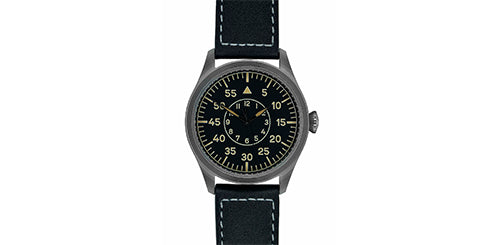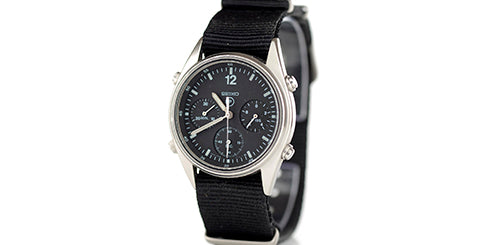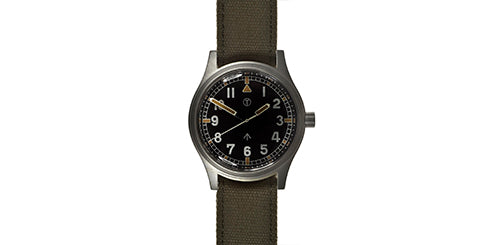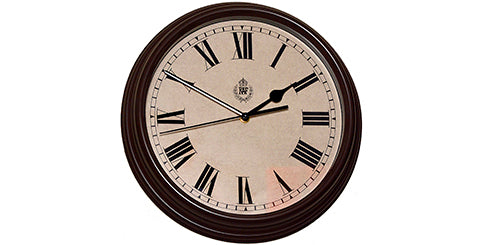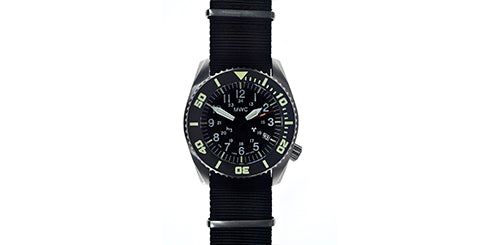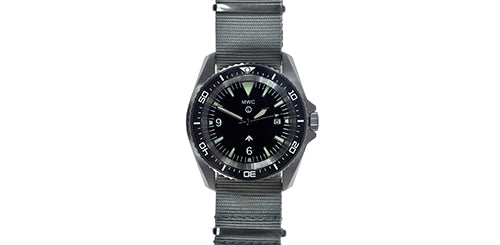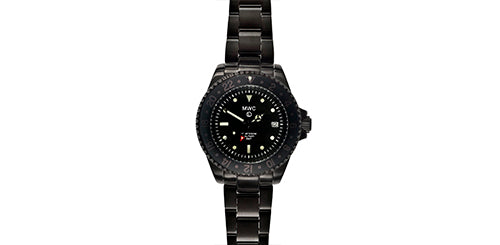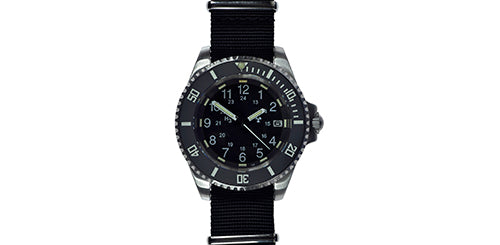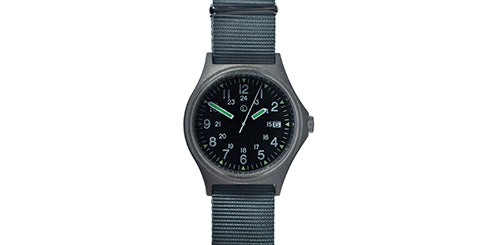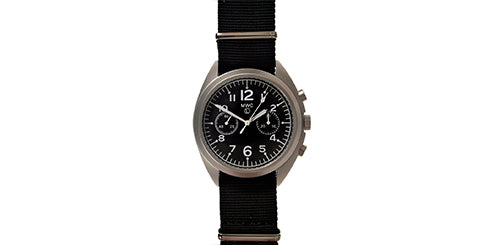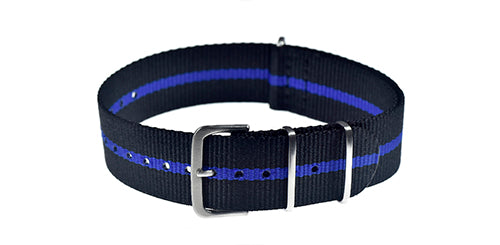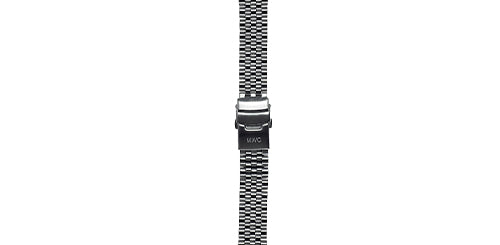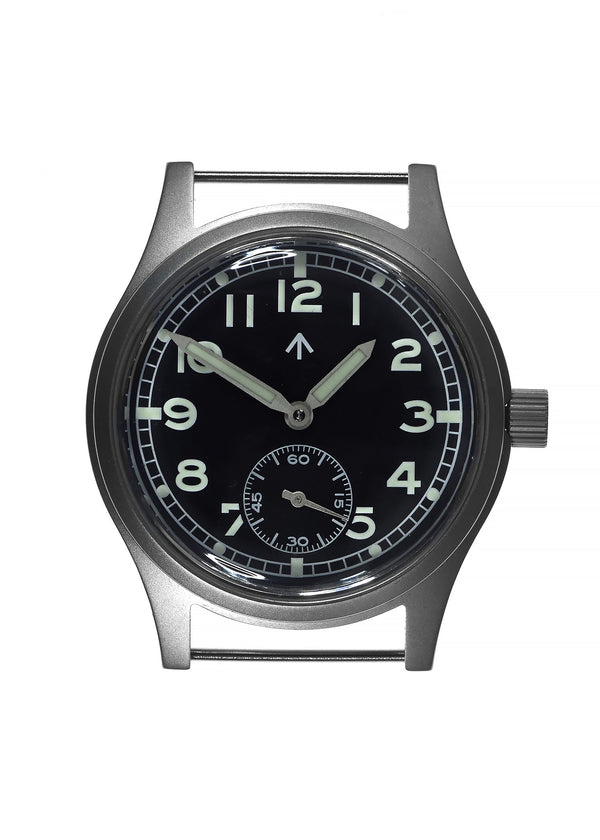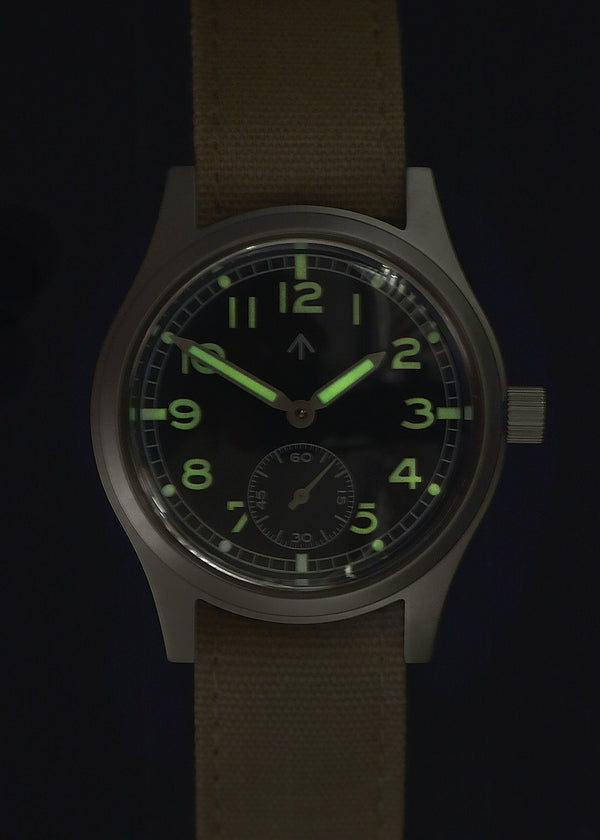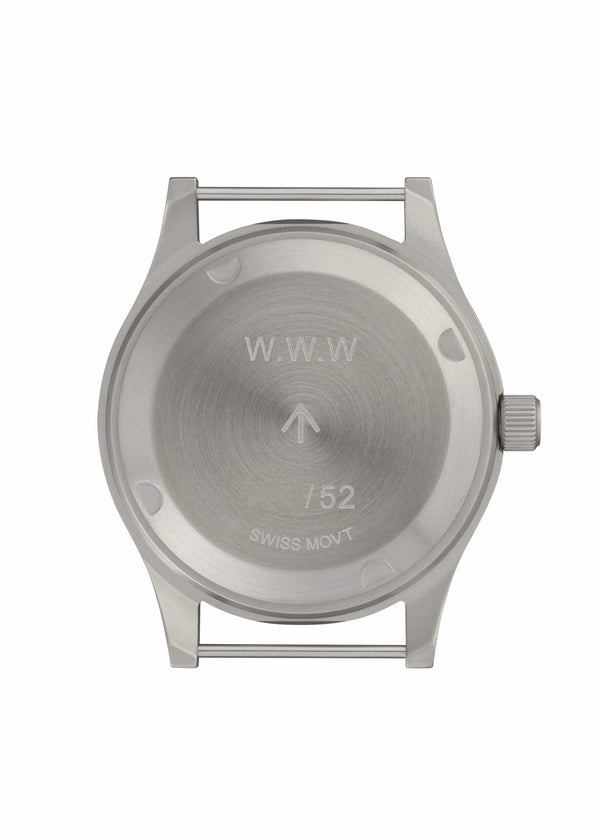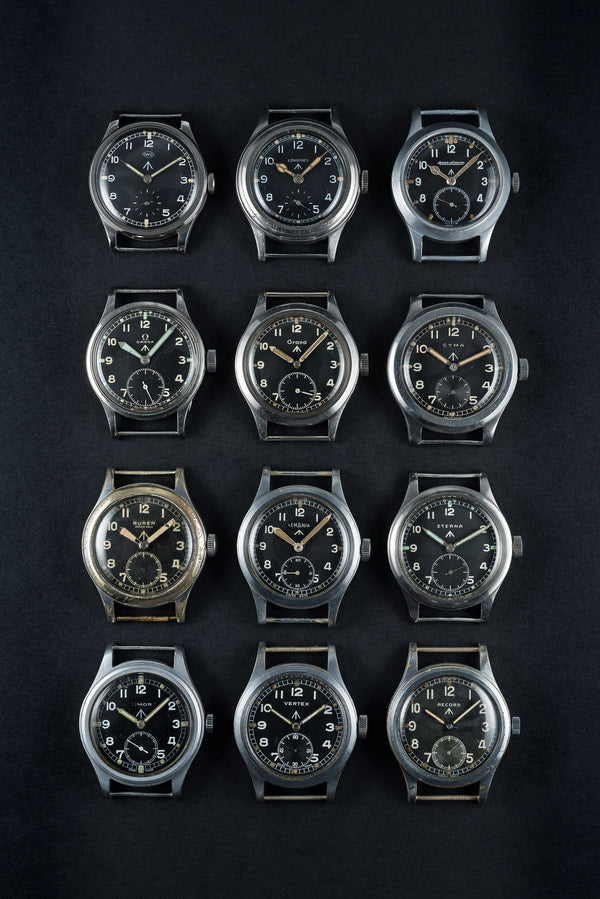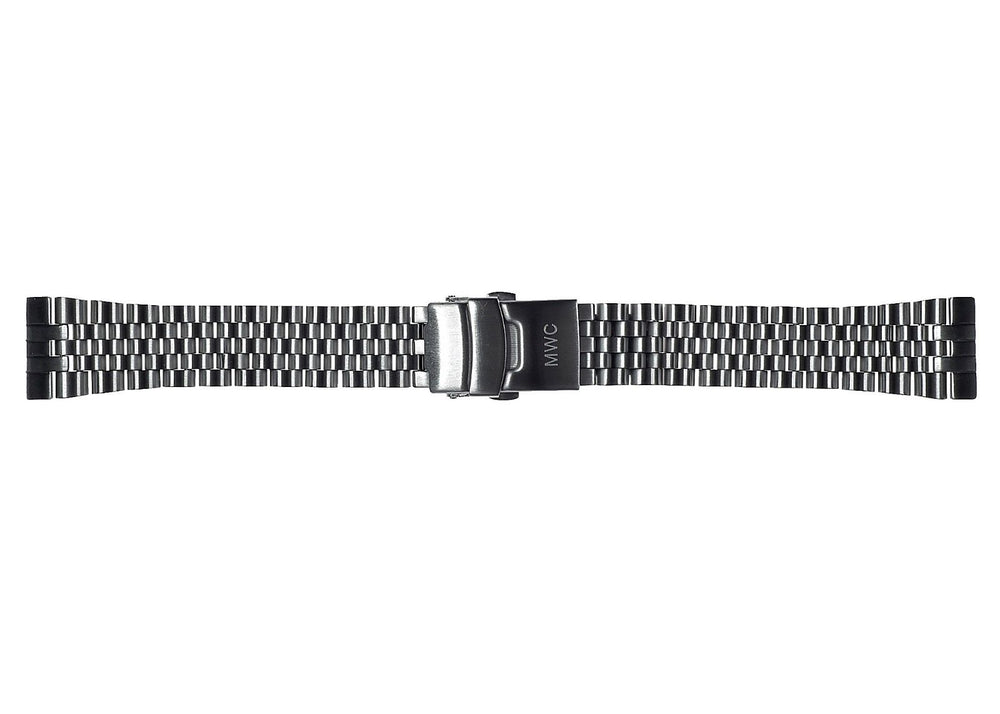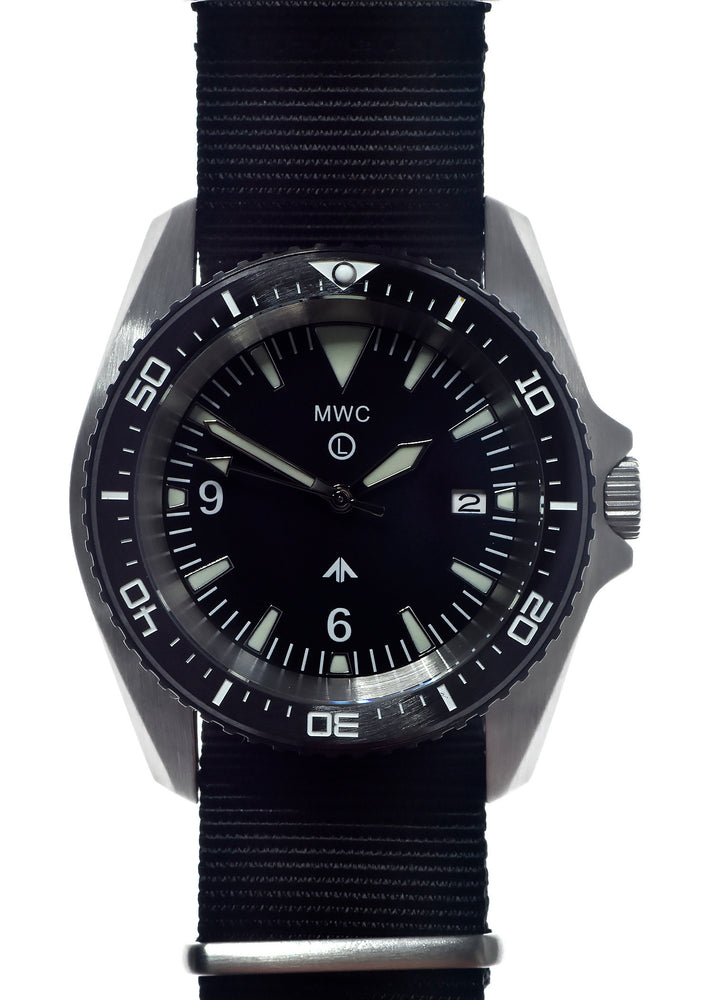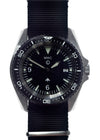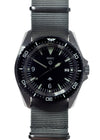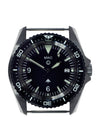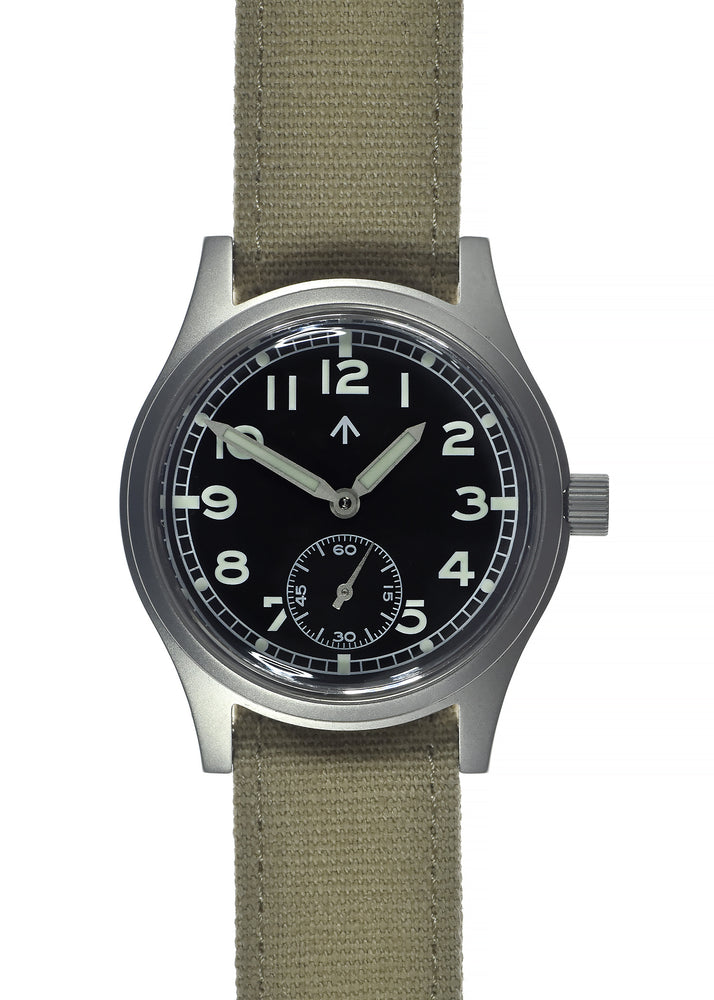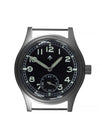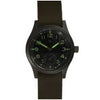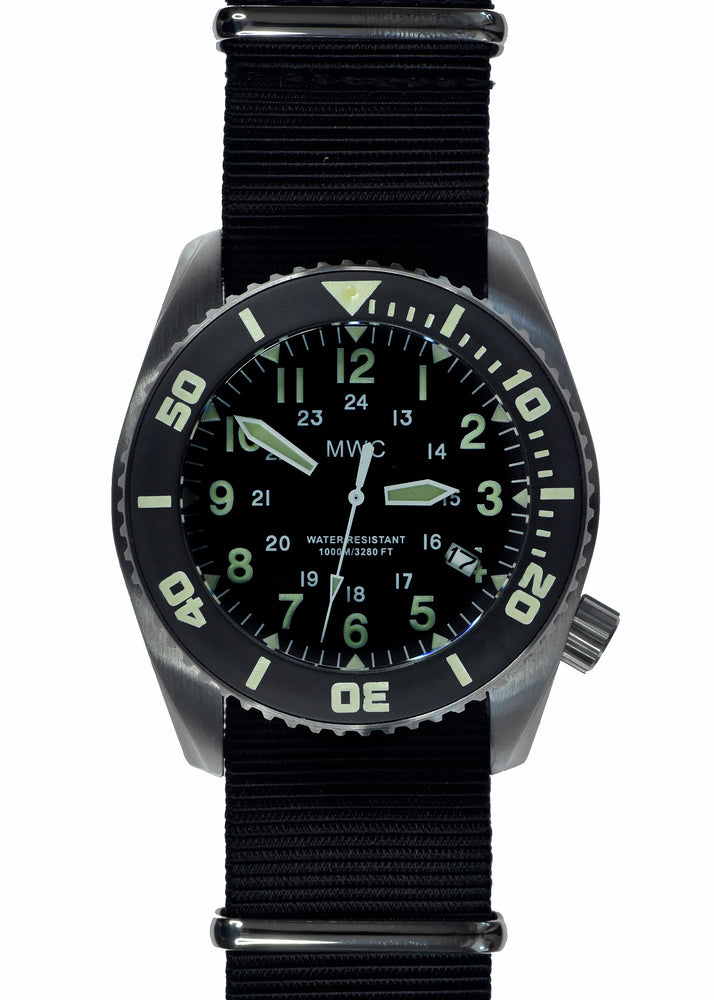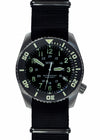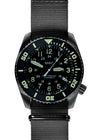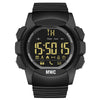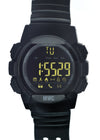MWC 1940s/1950s "Dirty Dozen" Pattern General Service Watch with 24 Jewel Swiss SW216 Hand Wound Movement and Box Sapphire Crystal - Ex Display Watch from MWC Looks New Large Saving over Regular Price
R210225.1
DD/01/AUCH – Full Description
Model: DD/01/AUCH
Condition:
The watch looks new. It runs fine, we wound it and left it running and it was still running after 30+ hours. The watch is an ex display sample and everything looks as new including the packaging.
Factory Description
SKU: DD/01/AUCH
This classic hand-wound 24-jewel 1940s/1950s pattern MWC military watch features a Swiss Sellita SW216 movement with a subsidiary dial second hand. It is inspired by the British military watches from the 1940s and 1950s, retaining their vintage aesthetic while significantly enhancing durability.
With 100m (330ft) water resistance, a shatter- and scratch-resistant sapphire box crystal, and a 316L stainless steel satin finish case, this timepiece is built for rugged performance. The crystal maintains the outward appearance of the original plexiglass while eliminating its drawbacks.
Key features include:
✔ Heavy stainless steel case (military-grade 316L stainless steel)
✔ Subsidiary dial second hand with a hacking function
✔ Luminous markings for enhanced visibility
✔ Historically accurate canvas strap as used in the 1940s and 50s
The final image showcases the original "Dirty Dozen" watches made by:
Buren, Cyma, Eterna, Grana, Jaeger-LeCoultre, Lemania, Longines, IWC, Omega, Record, Timor, and Vertex. While MWC was not among the original manufacturers (as it was founded in 1974), this watch is designed in the spirit of those classics.
Specifications
- Case Diameter: 36.5mm (excluding crown), 39mm (including crown)
- Lug to Lug: 43mm
- Thickness: 12.5mm
- Lug Type: Solid fixed strap bars
- Dial Colour: Black
- Case Material: 316L Stainless Steel
- Case Back: 316L Stainless Steel
- Crown: 316L Stainless Steel
- Water Resistance: 100m / 330ft / 10 ATM
- Movement: Swiss 24-Jewel Hand-Wound Sellita SW216
- Crystal: Sapphire box crystal (shatter & scratch-resistant) with anti-reflective coating
- Luminous Material: Luminova
- Serial Number: Engraved on the case back
- Strap: 18mm 1950s-pattern canvas strap
- Packaging: Supplied in a box
- Warranty: 24 months
📸 Photo Credit: Watches Of Knightsbridge
The Dirty Dozen – History & Links
For those interested in the history of the Dirty Dozen, the following links provide insights into the 12 original watches and their significance:
🔗 The Dirty Dozen 1
🔗 The Dirty Dozen 2
🔗 The Dirty Dozen 3
Sapphire Crystal vs. Mineral Crystal
Many customers ask about the benefits of sapphire crystal compared to mineral glass. Here’s why sapphire is the superior choice:
✔ Extreme Durability – Synthetic sapphire is highly resistant to shattering and scratching, making it ideal for military personnel, security forces, police officers, and outdoor enthusiasts. Over 70% of our customers fall into these categories.
✔ Impact Resistance – Over 90% of cracked watch crystals we see are mineral glass, even when hardened. Sapphire is significantly tougher.
✔ Advanced Manufacturing – After production, sapphire glass is heat-treated to remove internal stresses, making it even stronger. Two layers of anti-reflective coating further enhance clarity.
💡 Interestingly, sapphire crystal is now used on the latest iPhone screens due to its durability. However, sapphire comes at a higher cost, which is why it’s typically found in premium watches.
Swiss Sellita SW216 Movement – Winding Guidelines
To fully wind the SW216 movement from an empty state, 20 to 25 turns of the crown are required (most hand-wound watches need 30 to 40 turns, so this movement requires significantly fewer).
Key Notes on Winding:
✔ Power Reserve: ~42 hours when fully wound
✔ Screw-Down Crown Caution: When securing the crown, it adds 3-4 extra winds—keep this in mind to avoid overwinding
✔ Daily Winding: Around 15-17 turns every 24 hours should be sufficient
⚠️ Avoid Overwinding
Overwinding occurs when the mechanism is wound beyond its stopping point, potentially damaging the mainspring. Unlike automatic watches, which have built-in mechanisms to prevent overwinding, manual-wind watches require careful handling.
By following these guidelines, you ensure the longevity and reliable operation of your timepiece.






